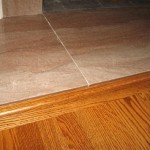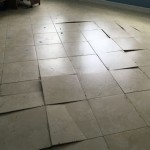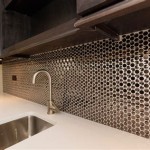Understanding French Tile Patterns and Uses
French tile patterns, with their elegant designs and enduring durability, have been a cornerstone of architectural aesthetics for centuries. From the intricate motifs adorning grand palaces to the charming accents gracing modest cottages, French tile patterns have consistently added a touch of sophistication and character to spaces. This article delves into the world of French tile patterns, exploring their diverse styles, historical significance, and practical applications in contemporary design.
Unpacking the Diversity of French Tile Patterns
French tile patterns encompass a vast array of styles, each reflecting a specific historical period, geographical region, or cultural influence. Some of the most prominent patterns include:
- Carreau de ciment: This iconic French tile pattern, characterized by its geometric designs and bold color combinations, emerged in the late 19th century. Composed of cement, sand, and pigments, Carreau de ciment tiles offer a timeless appeal and are often found in both traditional and contemporary settings.
- Faïence: Originating in the city of Faenza, Italy, Faïence tiles have historically graced French interiors, particularly in kitchens and bathrooms. These glazed ceramic tiles feature motifs ranging from floral patterns and geometric designs to intricate scenes of everyday life.
- Toile de Jouy: This distinctive pattern, characterized by its delicate floral motifs and romantic scenes, has found its way onto tiles in the form of "Toile de Jouy tiles." Often used in bathrooms and kitchens, these tiles add a touch of elegance and vintage charm.
- Provençal tile: Reflecting the vibrant culture of the Provence region, Provençal tiles often feature patterns inspired by nature, such as sunflowers, olive branches, and lavender sprigs. These tiles contribute a rustic and cheerful atmosphere to spaces, particularly in outdoor areas.
Beyond these iconic patterns, French tile manufacturers and designers continue to innovate, creating contemporary interpretations of traditional motifs and introducing innovative textures and materials.
The Historical Significance of French Tile Patterns
French tile patterns are not merely decorative elements. They have played a vital role in shaping the aesthetic and cultural identity of France throughout its history.
- Medieval Period: During the Middle Ages, French tile patterns were primarily used for functional purposes. Tiles were often employed to create decorative floors in churches, castles, and other significant buildings.
- Renaissance and Baroque Eras: As French architecture evolved during the Renaissance and Baroque periods, tile patterns became more elaborate and intricate. Tiles were extensively used to adorn walls, floors, and fireplaces in grand palaces, mansions, and public spaces.
- 19th Century and Beyond: The 19th century witnessed a surge in the popularity of French tile patterns, driven by industrial advancements and the rise of new manufacturing techniques. The availability of mass-produced tiles made them accessible to a wider range of people, contributing to the widespread use of French tile patterns in both urban and rural areas.
French tile patterns reflect not only the artistic sensibilities of each era but also the social and economic conditions that shaped the country's architectural landscape.
French Tile Patterns in Contemporary Design
French tile patterns continue to inspire and inform contemporary design. Their timeless elegance and enduring beauty resonate with modern sensibilities, making them a versatile addition to various spaces.
- Interior Design: From kitchens and bathrooms to living rooms and hallways, French tile patterns can be seamlessly integrated into any interior design scheme. They add a touch of sophistication, character, and visual interest to spaces, whether used in a traditional or modern setting.
- Exterior Design: French tile patterns can also be used in exterior design for walkways, patios, and pool decks. Their durability and resistance to weather make them ideal for outdoor applications.
- Commercial Design: French tile patterns are increasingly employed in commercial spaces, such as restaurants, hotels, and retail stores. They contribute a touch of elegance and sophistication to commercial interiors, creating a distinctive and welcoming atmosphere for patrons.
The versatility of French tile patterns allows designers to create spaces that are both stylish and functional, blending historical charm with contemporary aesthetics.
In conclusion, French tile patterns are more than just a decorative element; they are a testament to the rich history, artistry, and cultural heritage of France. From their intricate designs to their enduring durability, French tile patterns continue to inspire and inform contemporary design, enriching spaces with timeless elegance and character.

How To Lay A French Pattern

19th Century French Floor Tiles My Country Home

How To Lay A French Pattern

Installing French Pattern Travertine In Your Home Stone Mart

A Guide To Tile Laying Patterns Part 2 Cosmos Surfaces

French Pattern Tiles Versaille Patterns Stone Tile Depot

French Pattern Tiles Versaille Patterns Stone Tile Depot

Light Gray French Pattern Tile Design Foshan Factory Made In China Limestone Ceramic Floor Ceramics Tiles Com

Pittwater News

France Style Villa Use Exquisite Travertine Mosaic Tile 300x300
Related Posts








